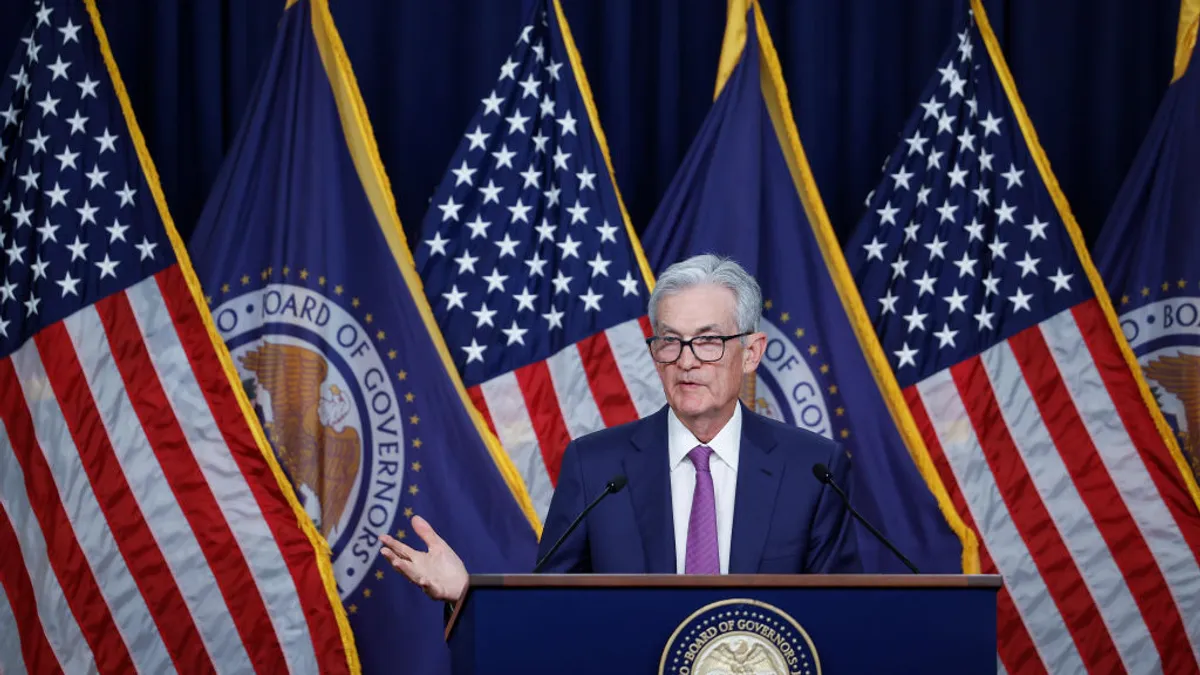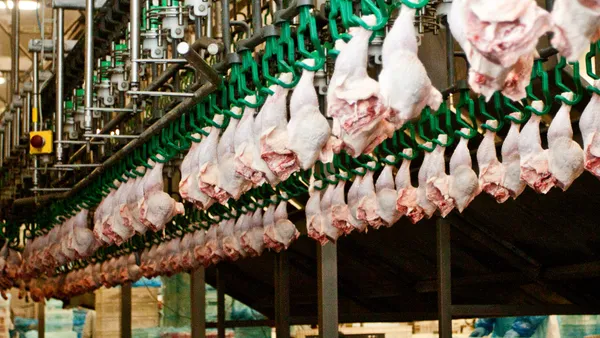Dive Brief:
- The Federal Reserve on Wednesday cut the main interest rate, a move that could provide some relief for farms that have been weighed down by elevated lending expenses.
- Fed officials slashed the rate by a half percentage point to a range between 4.75% and 5%. The cut reflects growing confidence in the strength of the labor market and that inflation is on a sustainable path downward, Fed Chair Jerome Powell said.
- Central bank officials expect to trim the federal funds rate to 4.4% by December and to 3.4% by the end of next year, according to the median of their projections released Wednesday.
Dive Insight
High interest rates have challenged the agriculture industry far more than other sectors, as the majority of farm assets are tied to real estate – one of the areas most exposed to changes in rates. The higher the rate, the more difficult it is for farms to take out loans to expand operations and maintain profitability.
Average interest rate on farmland loans more than doubled from the beginning of 2022 to 2024, according to the Kansas City Fed, increasing loan payments considerably.
But the impact of high interest rates has extended beyond real estate. The strength of the dollar has made U.S. commodities more expensive for foreign buyers compared to other countries, hurting competitiveness. While interest rates are just one of the reasons behind a drop in U.S. exports, a lower rate could bolster the position of American farmers down the line.
Farmer Mac economist Jackson Takach said the day before the cut that lower rates would lead to some immediate relief for agriculture producers.
"We see over the course of the next 24 months there’s an expectation of almost 200 basis points of cuts in short-term interest rates," Takach said, according to Brownfield Ag News.
Fed policymakers weeks ago signaled the cut to borrowing costs by noting that, after focusing for more than two years on their mandate to ensure stable prices, the cooling job market had prompted them to turn more to their other congressional directive of promoting maximum employment.
More broadly, economic growth this year has exceeded the expectations of Fed officials and many private sector economists.
“The U.S. economy is in a good place and our decision today is designed to keep it there,” Powell said, adding that “the labor market is still in solid shape.”
“I don’t see anything in the economy right now that suggests that the likelihood of a downturn is elevated,” he said. “You see growth at a solid rate, you see inflation coming down and you see a labor market that’s still at solid levels.”
Central bank officials expect that the federal funds rate will end this year at 4.4%, based on their median projections, and at 3.4% in 2025, 2.9% in 2026 and, over the longer run, at 2.9%.
The U.S. will probably not return to a period of near-zero interest rates similar to that preceding the pandemic, Powell said. “My sense is that we’re not going back to that, but you know, honestly, we’re going to find out.”
Fed officials expect continued progress in their fight against inflation, estimating that core PCE will fall to 2.6% this year, 2.2% next year and to their 2% goal in 2026, according to their median projections.
Commenting on the Fed’s fight against inflation, Powell said, “we’re not saying mission accomplished or anything like that, but I have to say we’re encouraged by the progress that we have made.”













